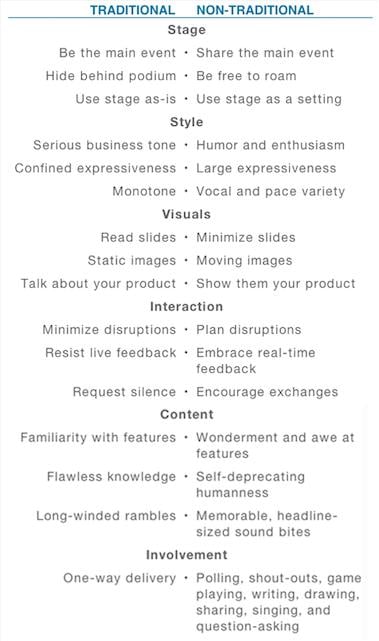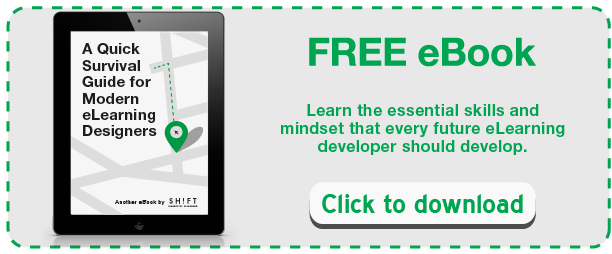Every learner wants to believe that their teacher is an expert who can give them knowledge they did not know. Realistically, that isn’t enough to keep the learner on task. The world today is full of stimuli that get our attention. Our brains want that same kind of stimulation in a learning setting. This is even truer in eLearning environments.
Therefore, eLearning professionals have to find different ways of attracting the eLearner’s attention by varying content delivery, asking challenging questions, giving them new things to think about, and so many other things. Our brains, including the brains of eLearners, are constantly in search of stimulation to catch our focus. They are designed to crave the unexpected. It is that stimulation that will win over the brain’s attention, and if that stimulation isn’t provided, something else off-task will provide it. If there is no stimuli, either from the eLearning content or other outside environmental factors, the learner turns within—and day dreams occur.

Surprise Helps People Learn New Things
The amygdala, the part of the brain that the eLearning professional hopes to stimulate is the region that responds to interest, surprise, attraction, and motivation. Another thing this part of the brain does is helps find prior knowledge, so that interest, surprise, attraction, and motivation can be attached to something learned in the past. The complicating factor in this part of the brain is that if the same stimulating technique is used too often, it becomes less stimulating...the brain will cease to look at it like stimulation at all.
The belief is that if something is new to us, our brains are interested and will examine and evaluate that new thing to see if it will reward us. We’re learning as we investigate the new thing. However, four days in a row, or even four Mondays in a row, of the same stimuli and our brain isn’t as interested in conducting that investigation. Variety is indeed the spice of life.
When learning becomes stimulated by something new, synapses in the brain fire like crazy, and connections are made. Then, with good instruction and an interested learner, those learning connections build on each other and more learning can take place. Keep in mind that a pleasant surprise is preferable, according to a study done by Emory University and Baylor College, compared to expected enjoyable events and how pleasant surprises might be built into lessons.
How the Brain Reacts
When new information is presented to the brain, it does a “scan” to see if it recognizes that information. If it does, then the brain knows how to respond. If the information is new, the synapses light up like crazy. If the information is boring, the synapses just sit there. No fireworks. Spaced out. No learning. Hardcore traditionalists should also note that when an eLearner is surprised and their attention is won, memory is strengthened. Things that can be attached to the unusual have a better opportunity to stand out in memory.
What happened last Monday (even if today is Tuesday) is difficult to remember and relay to a friend if it was a normal day. However, if you had to leave early to take the dog to the vet, or if you won $50 on a scratcher’s ticket, you are more likely to remember last Monday, even if today is Sunday. Unusual events will more likely be remembered.
What You Can Do
There are several ways to add positive surprise in eLearning environments:
- Start with a bang. Don’t start lessons with the traditional objective for the course (at least not every time in the same format). Tell a story. Give students a statistic, and then spend the lecture helping them make connections to see if that statistic is possible.
- Set up conflict with a story. Bill Gates dropped out of school. Boxing promoter Don King was in jail for killing a man. Don’t just present information, do it with a story with tension, then “learn” the details and backstory. Learn more about including surprise in your stories here.
- Have an interactive conversation with an eLearner. Try to add humor and ask questions rapid fire. Never let eLearners know when their time will come. Tension can be your friend.
- Break up monotony. Change routines so that formats and techniques are changing, not just day to day, but also during a lesson. A two minute video to prove a point can break up monotony.
- Use stories to explain how things happened. Explain how Marie Curie didn’t just work on radiation, but that it ultimately killed her and her notebooks are still radioactive all these years after she died.
- Impressive design. Designing standout and appealing eLearning generates a surprise response. People will be pleasantly surprised when encountering with a design that is visually appelaing. So, shake up the layout and the backdrop and other design elements.
Here's a final tip provided by Mars Dorian: "Look for something small and common that people don’t pay attention to because it’s standardized and then “remarkablize” it."
Below, Nancy Duarte suggests several ways to transform your traditional presentation into something captures your audience’s attention, many of these can be applied to eLearning design too:

CONCLUSION:
Interesting, surprising, novelty, are all ways to explain what the brain is looking for in all environments, including eLearning. You can’t walk around with a yard stick to slap a desk periodically to see if everyone is awake and on task, but there are plenty of options available get and keep eLearner’s attention. Use them wisely and more learning will occur.








